Introduction
The Great Resignation got its name in 2021 when the number of US workers leaving their jobs hit an all-time high. As the year progressed, the resignations kept on growing. As we finally enter 2022, the question on every employers’ mind is this: Will The Great Resignation finally come to an end?
Data from 1,019 full time US employees points to an inconvenient truth. The Great Quit is still with us. Yet, as much as organizations may want to point to COVID and work arrangement uncertainty or the push for higher paying jobs as influencing factors, we found that’s not the case. In fact, classic issues of workplace appreciation, collegiality, and the ability to be oneself are the big culprits.
KEY THEMES
• The Great Resignation Is Not Over. Some sources cite Bureau of Labor Statistics and other economic metrics as evidence of a resignation cool-off. Our data shows otherwise. Nearly 50% of employees across genders and age groups consider quitting in the next 6 months.
• It’s Not Just The Young Employees You Have To Worry About. Millennials get cited as the most challenging workforce segment, and the one most likely to pick up and leave. Our data shows that’s just not fair! Full time employees nearing their mid-career stage also show strong tendencies toward quitting.
• Flexible Work Arrangements Wont Solve Resignation Problems. The COVID crisis brought conversations about ongoing flexible work arrangements to the forefront of employment conversations. Employees may like workplace flexibility. However, the lack of flexibility has little-to-no bearing on their chances of quitting.
• Rigid Workplace Cultures Drive Employees To Leave. Employees feel a deep need to be their authentic selves at work. Employers that expect employees to tailor themselves to strict cultural work norms will see higher resignation rates.
• A Little Appreciation Goes A Long Way. An employees’ age or gender doesn’t matter when it comes to appreciation. If they feel undervalued at work they will really consider quitting. Even if you pay them well and give the opportunities for growth, it’s not enough. Nothing beats kudos for a job well done.
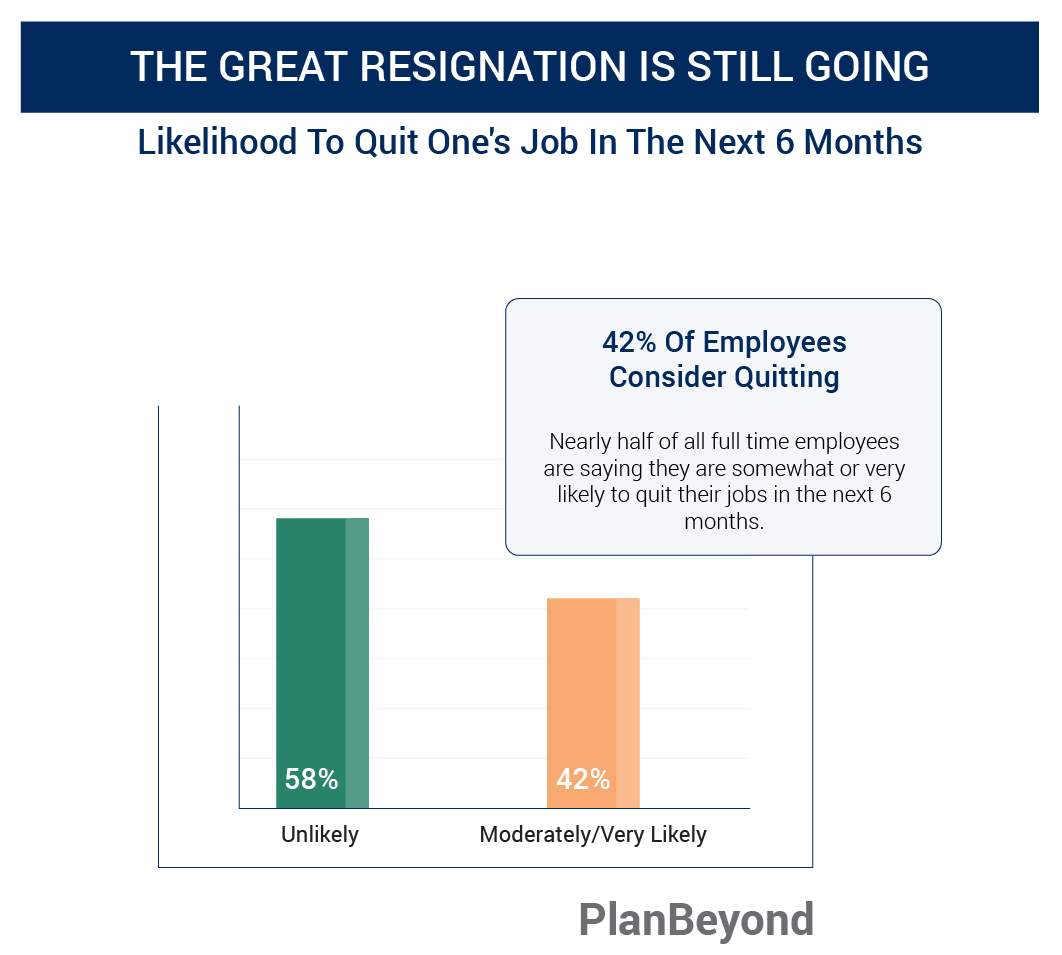
Report Findings
Employers hoping for The Great Resignation to end will need to keep waiting. Among the over 1,000 full time workers surveyed, nearly half show some plan to leave their jobs in the next six month.
When it comes to quitting, there’s no battle of the sexes. Statistically speaking, men and women are equally likely to consider quitting their jobs.
However, it’s another story when we look at age dynamics. Sure enough, Millennials in the 25-34 year age range tend to skew well above Boomers when it comes to planning to quit. And yet, we can’t point fingers at just Millennials. Nearly 50% of Gen Zers between the ages of 18-24 and younger Gen Xers also have quitting on the mind.
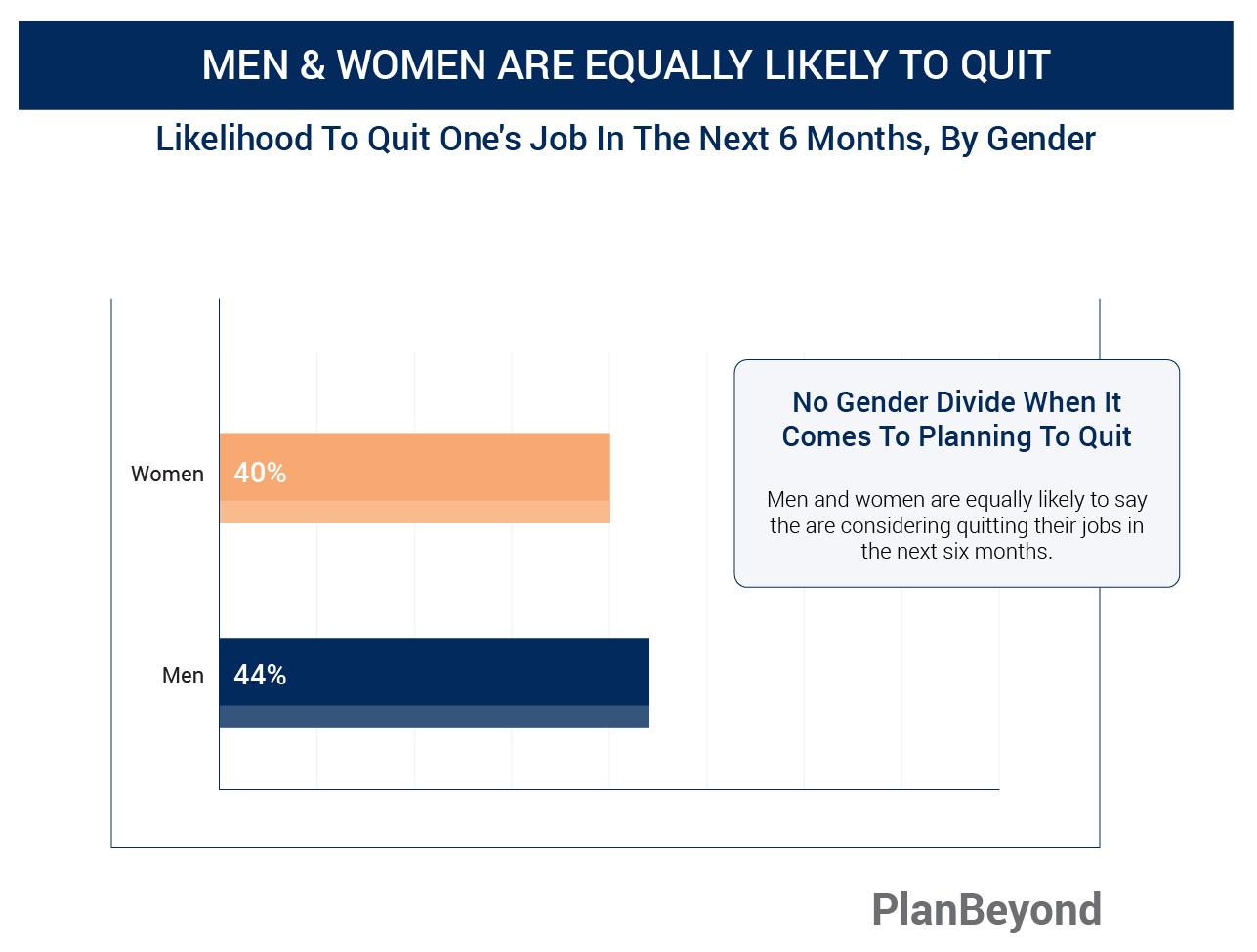
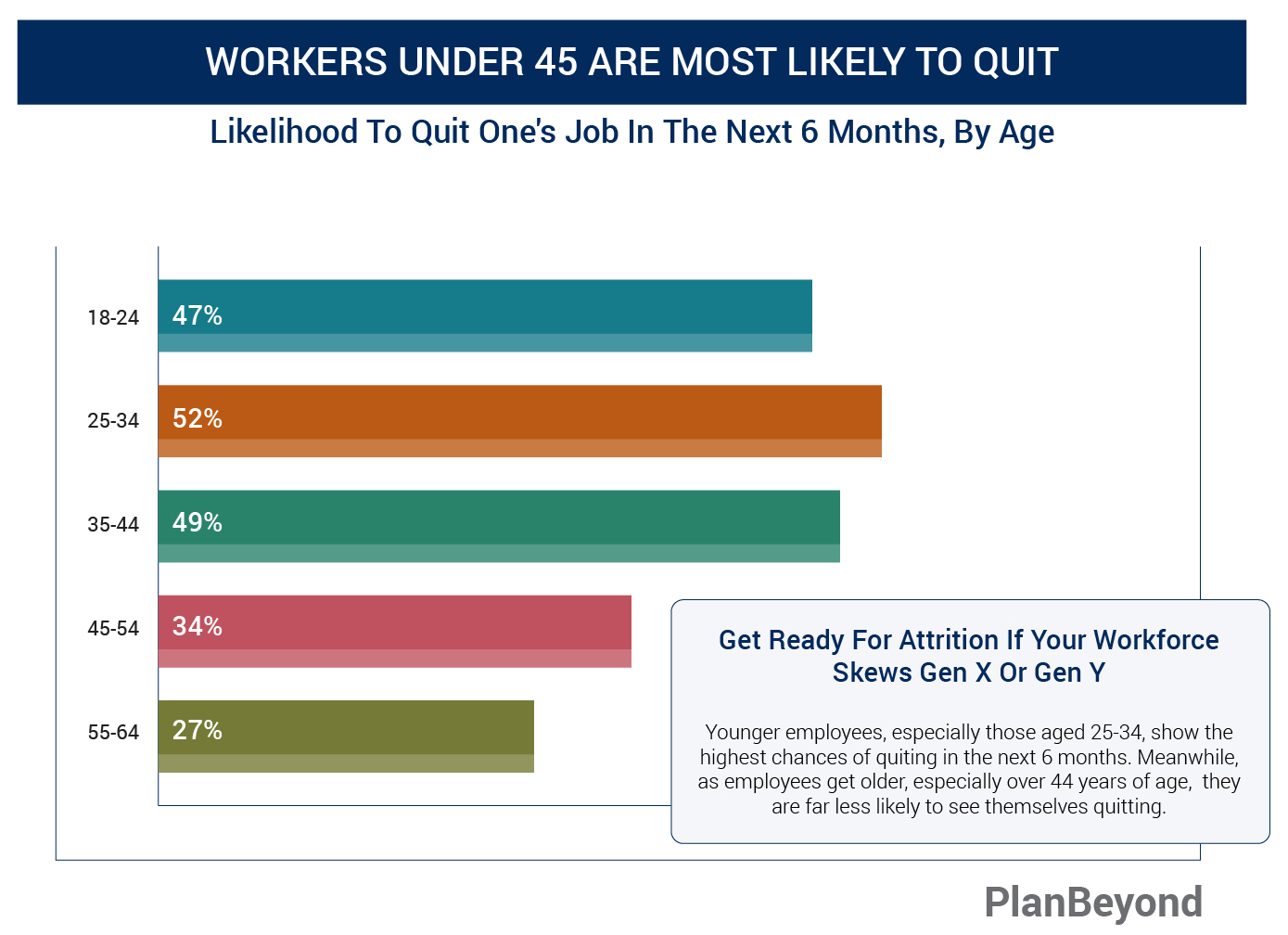
What’s behind such a large number of full time employees thinking about quitting? When we break out the impact different factors have on resignations, the top factor is under appreciation. Remarkably, this is well above the impact unfair compensation, lack of professional growth, or boring day-to-day work have on quitting. When employees do not feel valued, they plan to leave!
Rounding out the top three factors driving employees to quit is the presence of a bad boss and the inability to be one’s true self on the job.
Notable in all of this is how not impactful work arrangements are in the quitting equation. The COVID crisis led to conversations about working from home and hybrid work arrangements to the forefront of workplace conversations. While everyone seems to be talking about it, the data shows that this is the least likely factor impacting an employee’s decision to stay or go.
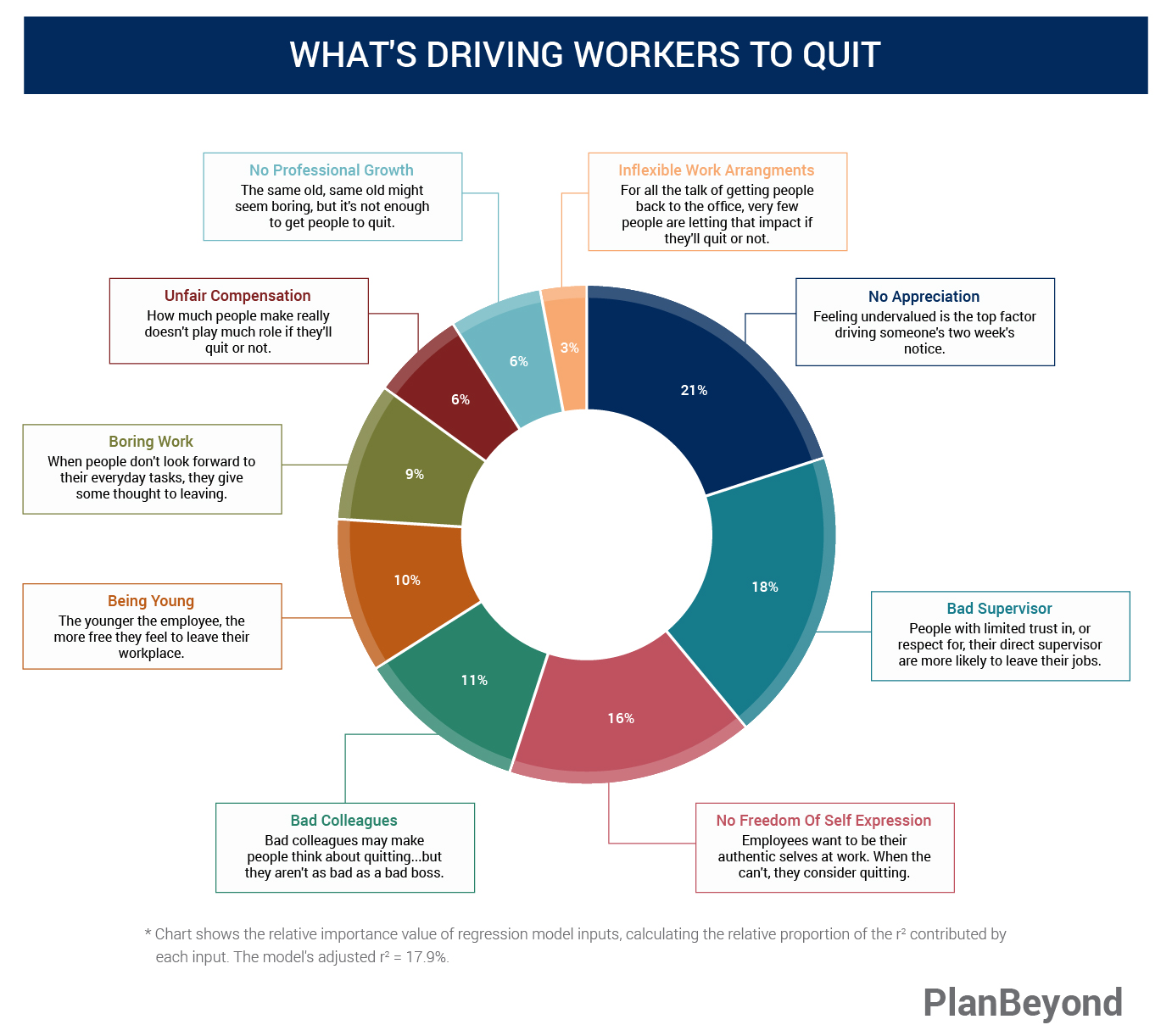
When we slice and dice the data between men versus women, some nuance in quitting factors appears. While men and women are equally likely to consider quitting, the driving factors vary slightly. 22% of what’s driving women to quit is a lack of respect or trust for their direct supervisor. In contrast, this is only driving 10% of the reason behind men quitting.
Lack of appreciation is responsible for 19% of what’s driving men to quit, making it their number one driver. Interestingly, the inability to be oneself rounds out the top three drivers for both men and women.
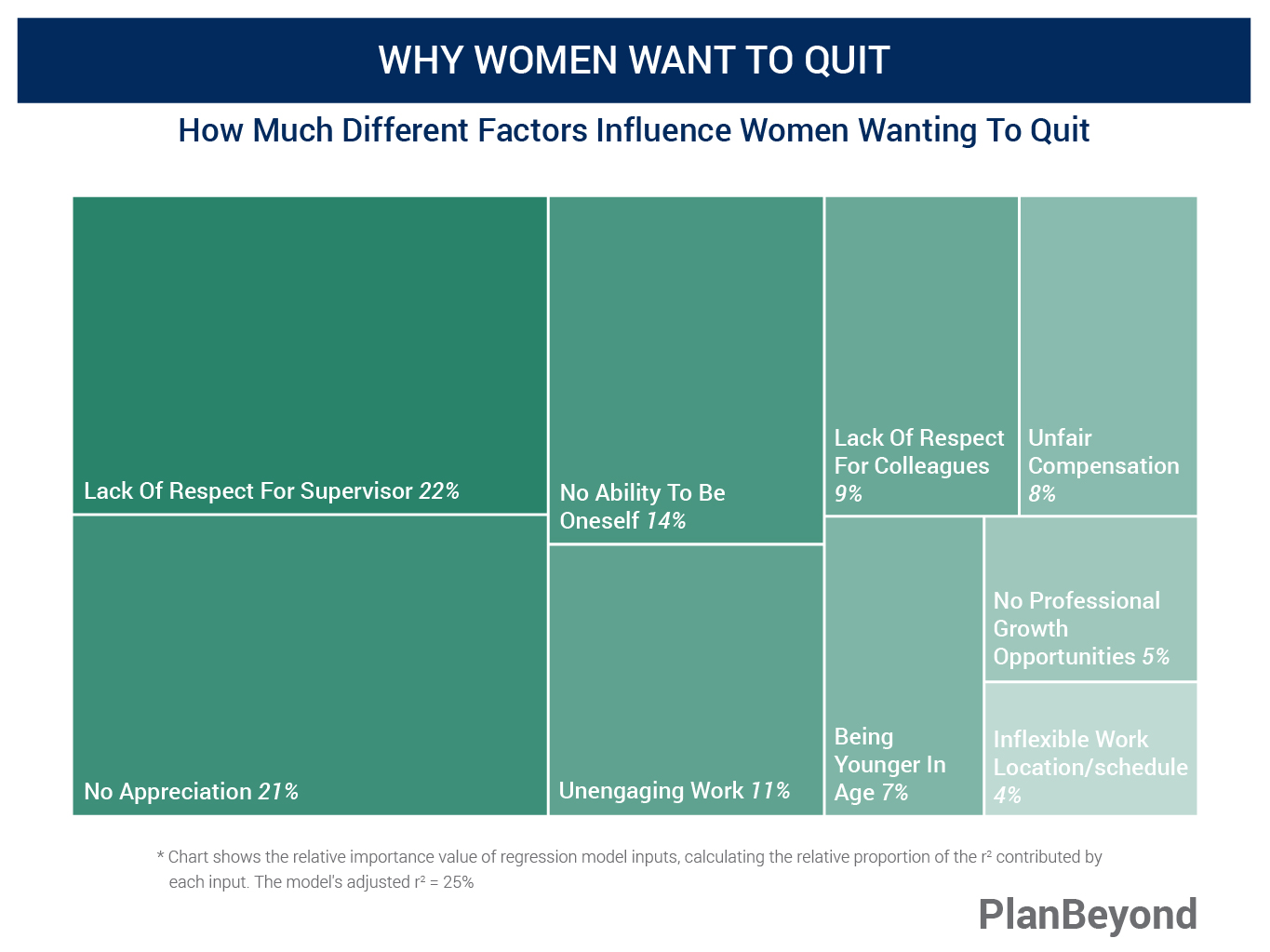
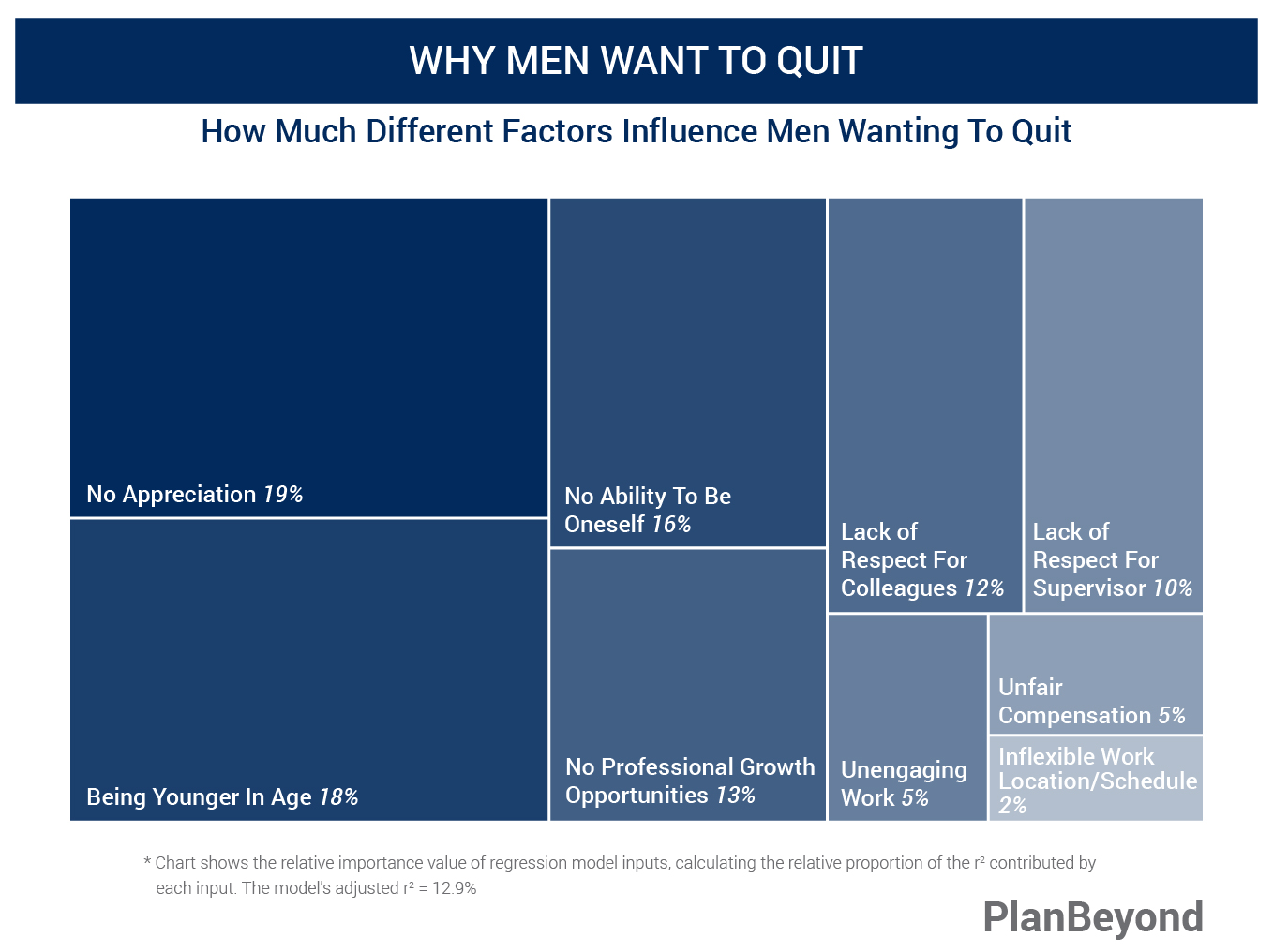
Respondents segmented by age show the exact same top three factors most influencing their likelihood to quit. Though, those factors hold different relative importance.
Not feeling appreciated on the job is behind 25% of the reason employees younger than 44 think about leaving their jobs. Meanwhile, this factor explains 20% of what’s behind employees 45 and older wanting to quit.
For older workers, the top driving factor is lack of respect for their direct supervisor. This is also an impactful factor for young employees, just not to the same degree.
Most remarkable is that both younger and older employees alike want the freedom to be themselves on the job. Not having that freedom is the 3rd-most important factor determining an employee’s likelihood to quit.
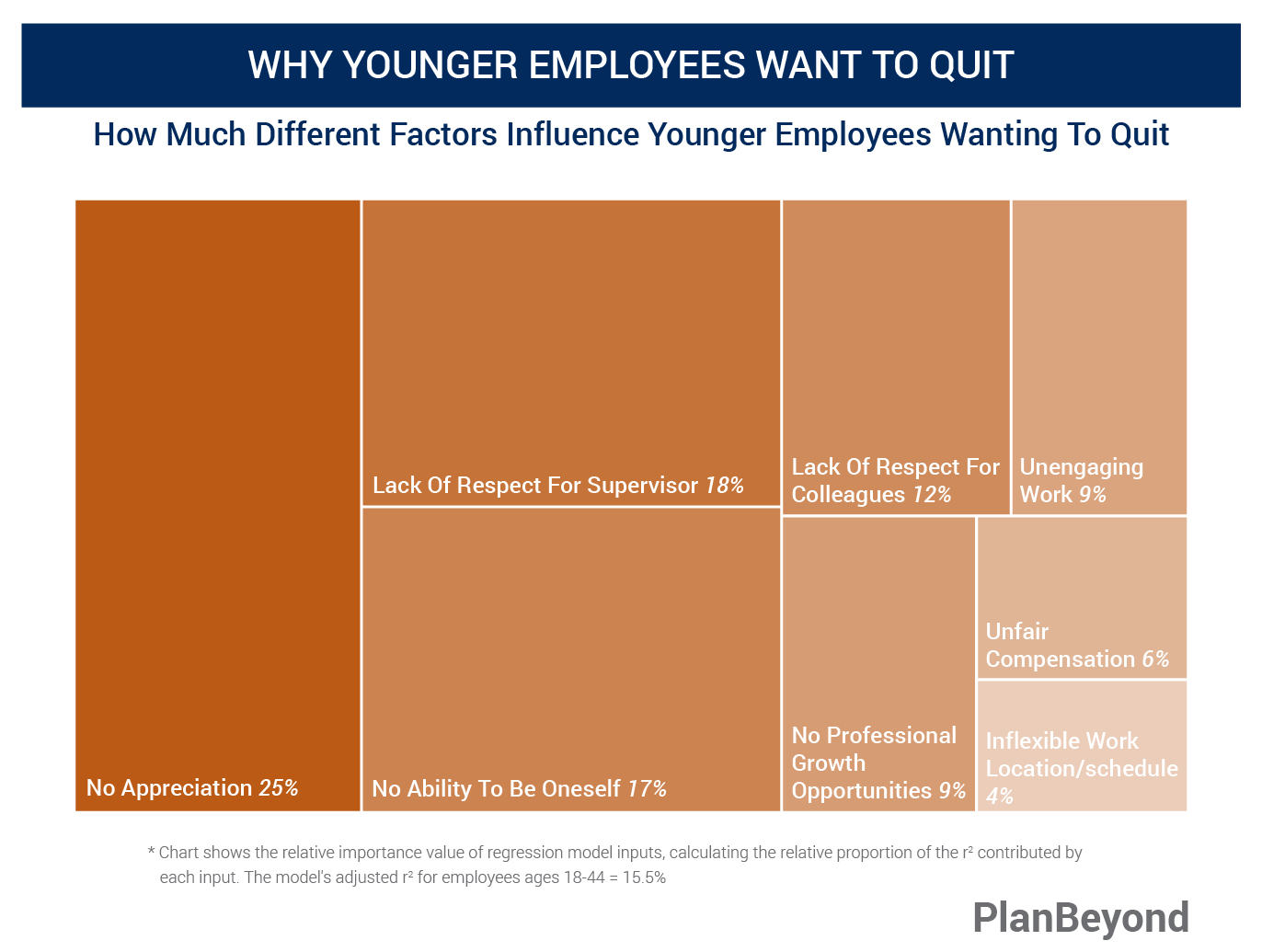
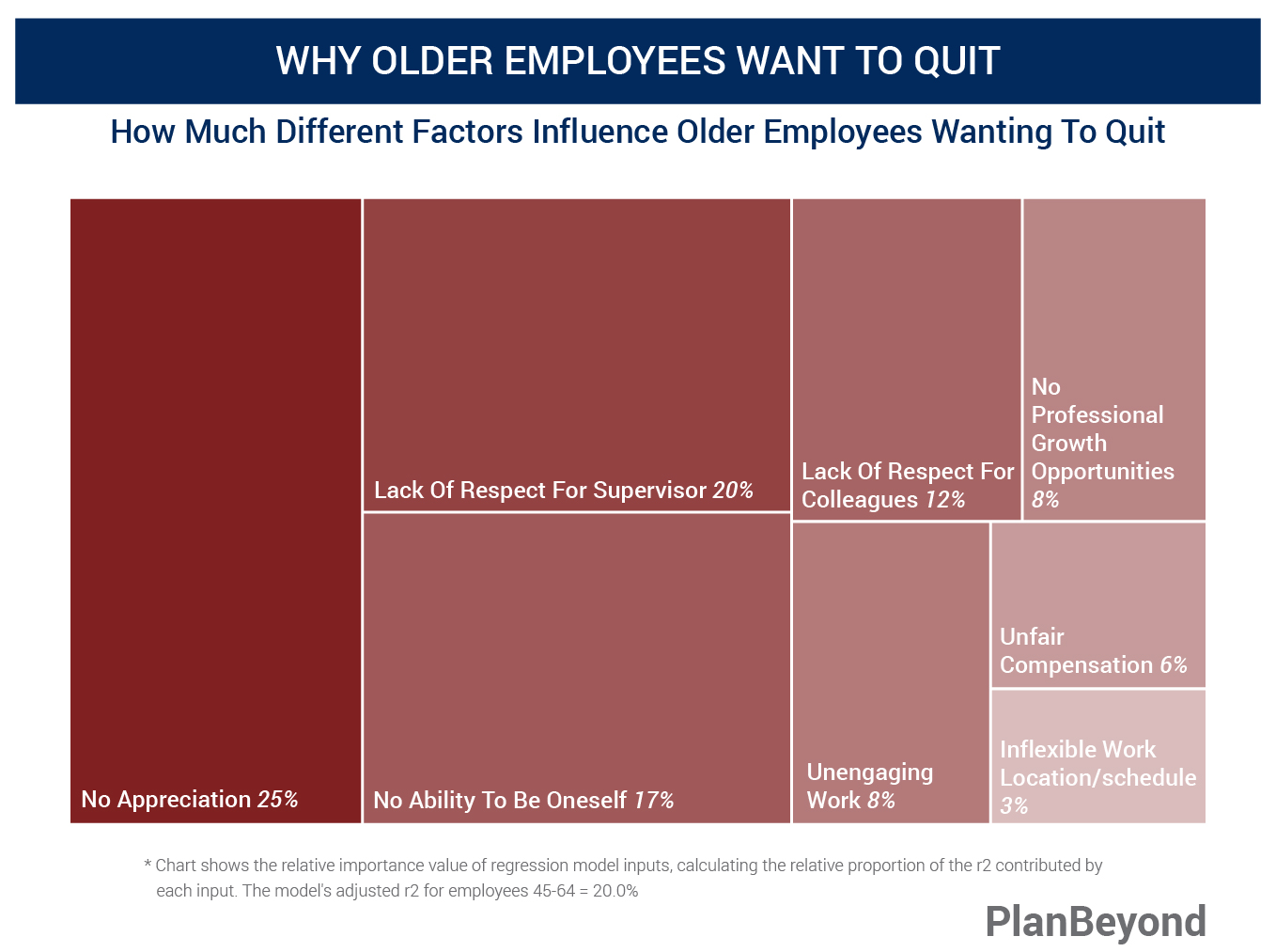
Digging into the question of being oneself uncovered that it’s really those between ages 35-44 that are influenced by this factor. 31% of their reasons for considering quitting comes from an inability to be their true selves at work.
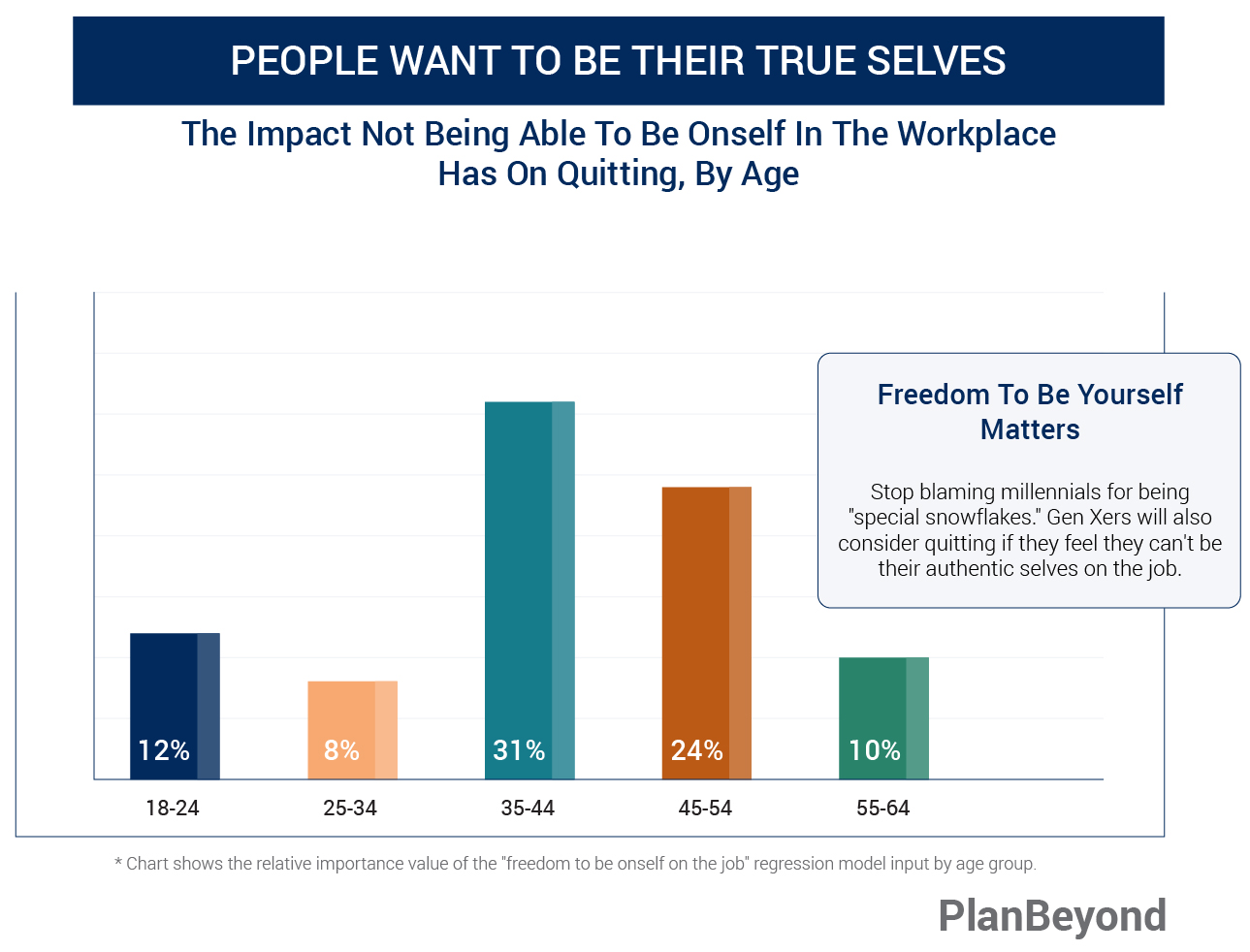
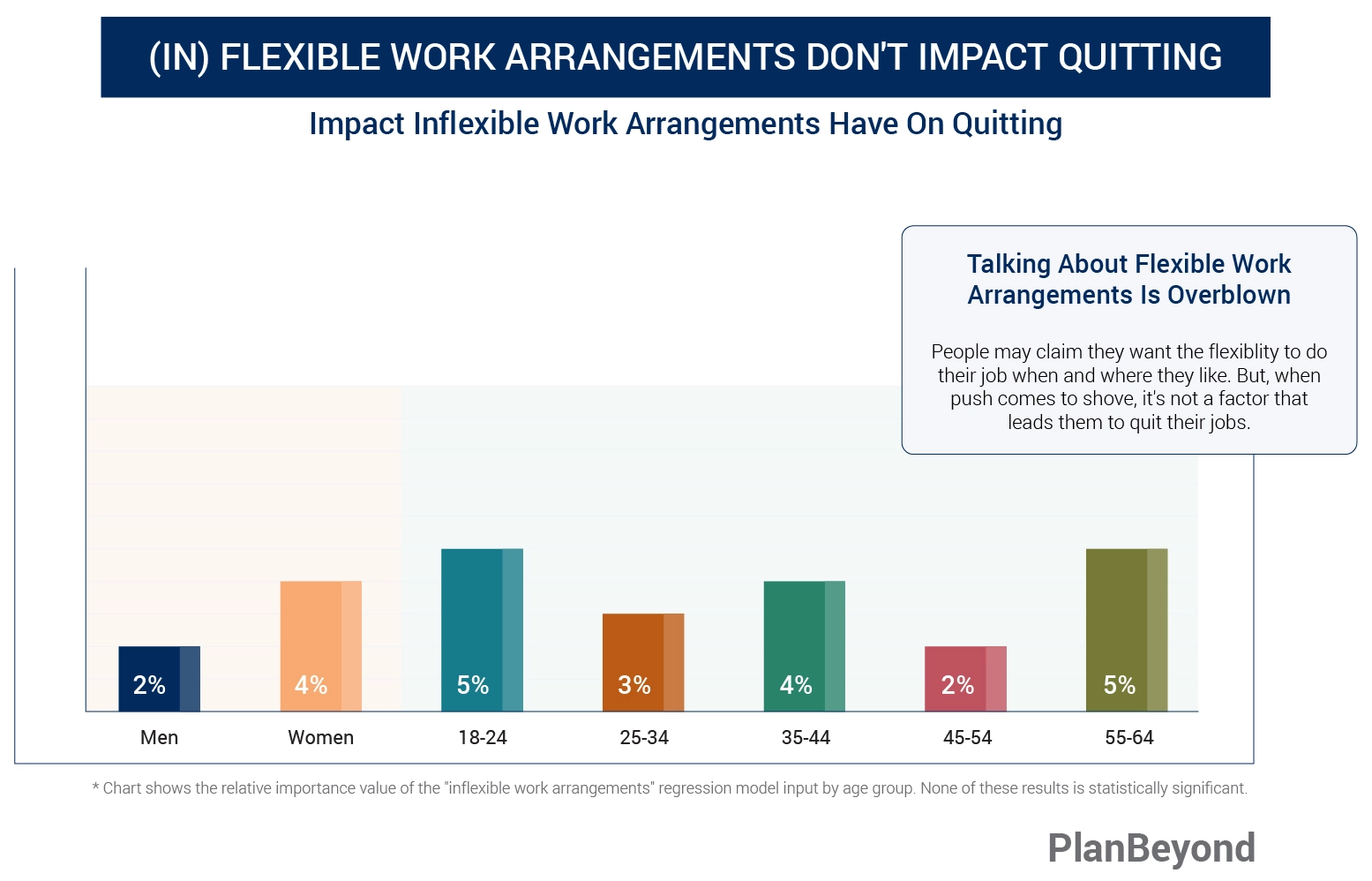
On the opposite end of the spectrum is the impact, or should we say lack of impact, that work arrangements have on quitting. Men or women, young or old, it doesn’t matter. Just about no one lets their work arrangement influence whether they stay or go.
Conclusion
A lot of speculation continues to follow the record-breaking resignations of 2021 and what it means for employee retention in 2022. Questions abound about what wages will bring employees back or what the ideal work arrangements is to keep employees satisfied.
However, when it comes down to it, classic workplace dynamics continue to drive employee retention. Feeling appreciated, collaborative worker-supervisor relationships, and the ability to be one’s self drive people to stay. The lack of these features drives them to quit.
Keep in mind one remarkable thing about all of these dynamics: influencing them does not cost money! Making a deliberate effort to create positive work environments is a huge boon for any organization. The financial cost is low but the retention gain is very, very high.
Methodology
A total of 1,019 respondents were surveyed between November 16 and November 19, 2021. Respondents had to live in the United States, work full time, and be between the ages of 18-64. Using a 10-point likert scale, respondents were asked to answer a series of questions relating to their likelihood to quit their jobs in the next six months. They were then asked about their attitudes towards other work-related issues including feelings about their managers and colleagues, compensation, growth opportunities, and other potential variables impacting resignation.
Data was analyzed by market research agency PlanBeyond using cross tabulations, correlation analysis, and multivariate regression models. Relative Importance, also known as Johnson’s Relative Weights, was used to normalize regression results. This offered a comparison of the relative impact of independent variables on the dependent variable of likelihood to quit.
CITATION: Troyani, L. (2022). The Great Resignation Research Report: What’s Really Driving American Employees To Give Their Two Weeks’ Notice. PlanBeyond. https://planbeyond.com/about/original-research/great-resignation-market-research-report/





